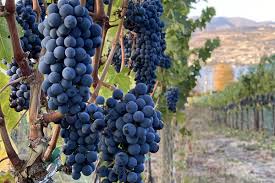Stamp: Landscapes (Liechtenstein 1930)
Landscapes (Liechtenstein 1930)
01 January (Liechtenstein ) within release Landscapes goes into circulation Stamp Landscapes face value 3 Swiss centime
| Stamp Landscapes in catalogues | |
|---|---|
| Michel: | Mi:LI 94 |
Stamp is square format.
Also in the issue Landscapes:
- Stamp - Landscapes face value 3;
- Stamp - Three-sisters-mountain face value 5;
- Stamp - Alp at the Bettlerjoch face value 10;
- Stamp - Vaduz castle face value 20;
- Stamp - Naafkopf face value 25;
- Stamp - Chapel "im Steg" face value 30;
- Stamp - Rofenberg Chapel face value 35;
- Stamp - Mamertus chapel face value 40;
- Stamp - Malbun face value 50;
- Stamp - Gutenberg castle face value 60;
- Stamp - Schellenberg abbey face value 90;
- Stamp - Vaduz castle face value 1.20;
- Stamp - Pfaelzerhuette face value 1.50;
- Stamp - Prince Franz I and Princess Elsa face value 2;
|
Data entry completed
53%
|
|
|---|---|
| Stamp Landscapes in digits | |
| Country: | Liechtenstein |
| Date: | 1930-01-01 |
| Perforation: | 10½ |
| Emission: | Definitive |
| Format: | Stamp |
| Face Value: | 3 Swiss centime |
| Print run: | 334885 |
Stamp Landscapes it reflects the thematic directions:
A landscape is the visible features of an area of land, its landforms and how they integrate with natural or man-made features. A landscape includes the physical elements of geophysically defined landforms such as (ice-capped) mountains, hills, water bodies such as rivers, lakes, ponds and the sea, living elements of land cover including indigenous vegetation, human elements including different forms of land use, buildings and structures, and transitory elements such as lighting and weather conditions. Combining both their physical origins and the cultural overlay of human presence, often created over millennia, landscapes reflect a living synthesis of people and place that is vital to local and national identity. The character of a landscape helps define the self-image of the people who inhabit it and a sense of place that differentiates one region from other regions. It is the dynamic backdrop to people’s lives. Landscape can be as varied as farmland, a landscape park, or wilderness. The earth has a vast range of landscapes, including the icy landscapes of polar regions, mountainous landscapes, vast arid desert landscapes, islands and coastal landscapes, densely forested or wooded landscapes including past boreal forests and tropical rainforests, and agricultural landscapes of temperate and tropical regions.
Agriculture is the cultivation and breeding of animals, plants and fungi for food, fiber, biofuel, medicinal plants and other products used to sustain and enhance human life.[1] Agriculture was the key development in the rise of sedentary human civilization, whereby farming of domesticated species created food surpluses that nurtured the development of civilization. The study of agriculture is known as agricultural science. The history of agriculture dates back thousands of years, and its development has been driven and defined by greatly different climates, cultures, and technologies. Industrial agriculture based on large-scale monoculture farming has become the dominant agricultural methodology.
A profession is a field of work that has been successfully professionalized. It can be defined as a disciplined group of individuals, professionals, who adhere to ethical standards and who hold themselves out as, and are accepted by the public as possessing special knowledge and skills in a widely recognised body of learning derived from research, education and training at a high level, and who are prepared to apply this knowledge and exercise these skills in the interest of others
Viticulture (Latin: vitis cultura, "vine-growing"), viniculture (vinis cultura, "wine-growing"), or winegrowing is the cultivation and harvesting of grapes. It is a branch of the science of horticulture. While the native territory of Vitis vinifera, the common grape vine, ranges from Western Europe to the Persian shores of the Caspian Sea, the vine has demonstrated high levels of adaptability to new environments, hence viticulture can be found on every continent except Antarctica.




